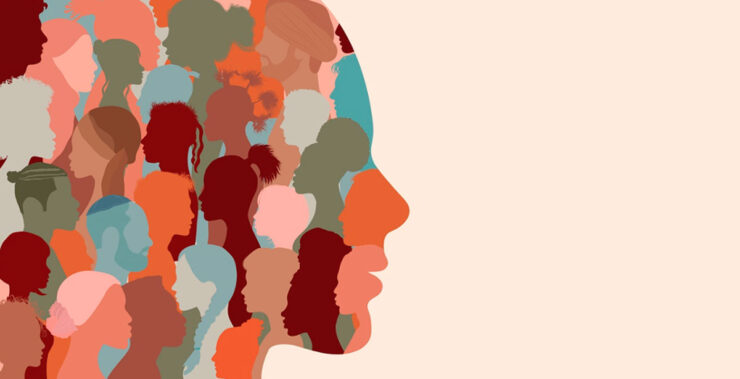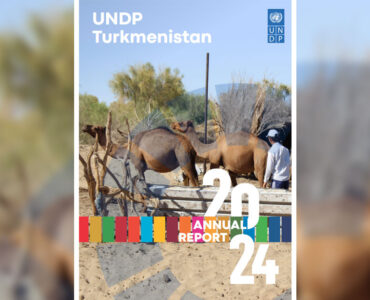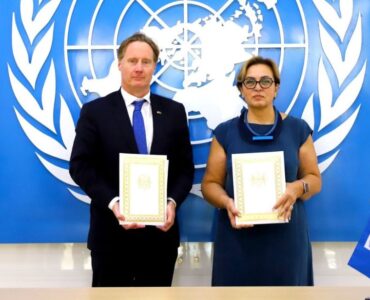Gender and women’s rights have always been a crucial part of policy making in Turkmenistan. In her article Cultural Parameters of Gender Policy Making in Contemporary Turkmenistan, written in 2005, Irina Liczek examines the historical progression of the main cultural parameters that influence gender policy making in contemporary Turkmenistan. She discusses how the Turkmen government has taken steps to improve the status of women while simultaneously supporting the revival of the patriarchy based on customs and religious practices from nomadic times.
Nomadic and Islamic Influence
Turkmens used to be nomadic populations, and their tribal social arrangements were characterized by the “overall gender asymmetry in structures of power and prestige” incorporated in the adat and sharia. While sharia is part of Islamic tradition, the adat is specific to Central Asian countries, including Turkmenistan. The adat was a set of rules that the Turkmen people followed when they were nomads, aiming to protect their tribes and communities. The adat rules were older than sharia, having been produced thousands of years ago and transmitted orally from generation to generation.
- Adat does not consider men and women to be equal, and so women’s lives were strictly regulated. Women were subjected to underage marriages for the economic benefit of their family, were married upon the receipt of kalym (bride-price) from the groom’s family, had no right to initiate divorce, could not own property, and mostly took care of household chores, gave birth, and reared a large number of children.
- Adat also allowed polygamy for men and inheritance of the widow by male relatives of the late husband’s family.
- When sharia was introduced, restrictions on women were slightly loosened, allowing them to choose when to get married, own property without the husband’s consent, and have rights to inheritance in the case of a relative’s death.
Overall, the combination of adat and sharia was strict, and women had little rights under these regulations.
Soviet Rule
After the October Revolution which led to the transition from tsardom to Soviet rule, laws were enacted that elevated women’s status in society.
- In 1917, the “Decree on Marriage Resolution” ensured that women had rights equal to those of men on dissolution of marriage.
- Furthermore, laws on the protection of mother and child, equal pay for equal work, and the protection of women and children in the working sphere were issued.
- In 1918, the All-Russian Congress of Soviets adopted the Soviet Constitution which stated that men and women are equal in all spheres of life.
- In 1921, Decree 67 abolished kalym in Turkmenistan, emphasizing the importance of mutual consent in a marriage.
- Since 1927, movements with the aim of “liberating” women from traditions and religious remnants took place across Central Asia, minimizing religious presence in the area. In Turkmenistan, the communist party even imposed regulations to prevent women from wearing religious headscarves.
These efforts were accompanied by measures to expand mass-educational activities in the most remote regions as well as increased allocations for building cultural institutions where emancipation work could be conducted with Muslim women. This led to radical social change to advance women’s emancipation.
The Soviet Union continued to push change over the course of its rule. An analysis of the UN documents from the 1970’s reveals that the USSR’s interest in promoting equality between men and women globally went beyond rhetoric and was matched by practical measures that have affected women’s lives up to the present day. However, the patriarchy and traditional attitudes were by no means erased from Central Asian republics.
Post-USSR
After gaining independence in 1991, Turkmenistan adopted a new constitution. It maintained that the state grants equal civil rights to both men and women. Furthermore, it provided that all forms of discrimination on the basis of sex are prohibited.
- In 1995, Turkmenistan, along with all the other Central Asian states, participated in the Fourth World Conference on Women, “Action for Equality, Development, and Peace.” By consensus, Turkmenistan endorsed the Beijing Declaration and the Platform of Action, which embodied the commitment of the international community to the advancement of women, ensuring that a gender perspective is reflected in all policies and programs at the national, regional and international levels.
- Additionally, in 1997 Turkmenistan established the Secretariat of the Women’s Union of Turkmenistan, the main civic organization dealing with women’s issues.
- However, though reported in the Turkmen state press and showcased during the news, the impact of these conventions and bureaus was minimal and mostly served the purpose to create the image of a modern state that is part of the international community. Still, there was some meaningful implementation of change. The Women’s Union piloted a variety of activities to assist women, including an educational component (acquisition of new skills, such as the English language and computer literacy), a job placement center (to assist young, unemployed women in finding a job), a reproductive health center, and a legal center (giving free legal consultations to women and men on women’s rights and family issues and explaining the provisions of the Family Code). These services were provided for three years in Ashgabat, but closed down soon after.
Contemporary Turkmenistan
As the new concepts of gender became internalized, the women’s movement was enhanced by the development of a network of women’s civic organizations registered under the Women’s Union. However, the Women’s Union became a control mechanism of the women’s movement and not a genuine promoter of gender equality. The restrictive political environment obliged the Women’s Union to remain a Soviet-minded structure, which did not have space to develop or become a prominent institution.
- The chairperson of the Women’s Union has changed three times since 2001, and because of lack of financial support from international organizations, the gender agenda of Turkmenistan has been at a standstill.
- The current situation indicates that gender will be pursued by “old” means – as a women’s issue – and much of the gender awareness programming will need to be re-implemented as a result of the frequent turnover of human resources at the higher levels.
- Looking at the nominal funding committed by the government, which has decreased dramatically since 1998, it is evident that development of a gender equality policy agenda is no longer a priority.
- Analysis of the cultural parameters of women’s status through history suggests that when it comes to women’s roles and status, unwritten law is stronger than written law and is based on century-old traditions where priority is given to the law of the community.
Currently, Turkmenistan is going through a period within which the UN-influenced institutions to advance women’s status have not proved sustainable. In order to create lasting change, international organizations must recognize the importance of keeping communities together and preserving traditions in Turkmen culture. Only then can the international community figure out how to implement long-term initiatives in advancing women’s rights in Turkmenistan.






